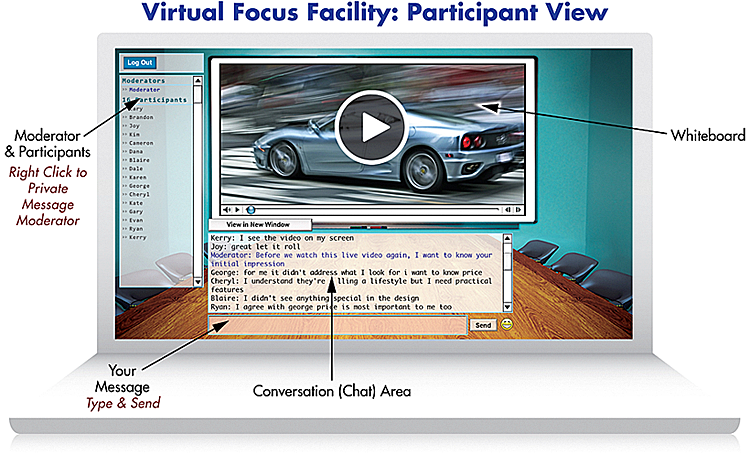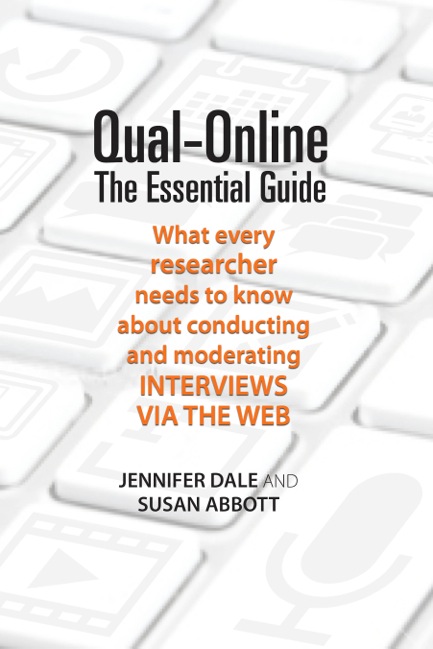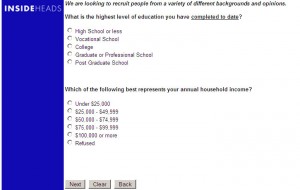Originally published June 19, 2015
Business behavior can be very telling. InsideHeads identified these 5 business trends to watch that will affect market research.
 1. Crowdsourcing
1. Crowdsourcing
If it’s not clear yet, social media is here to stay. The human desire to socialize and engage with others online gives savvy businesses the chance to collect feedback that is immediate, trusted, and free. Lengthy questionnaires have given way to quick polls, as attention spans of respondents wither down to seconds. Gone with consumer attention is the long term strategic planning that traditionally accompanies good marketing research. With the immediate feedback mechanism of today’s social media, businesses can (and do) post questions and problems to receive rich, real-time results. Smart brands looking towards the future are designing their virtual space with an eye on conducting more marketing research via social media.
 2. BYOD (Bring Your Own Device)
2. BYOD (Bring Your Own Device)
Choice is everywhere these days and showing no signs of going away. Each of us uses a device (or multiple devices) that best meets our needs. As the lines between personal and business hours blur, businesses are realizing the advantages, and challenges (e.g., security), of implementing BYOD in the workplace. Present obstacles aside, solutions are on the horizon. Because BYOD is not a trend, today it’s a right. Successful businesses will accommodate choice and offer customized solutions across all of their marketing. Lenovo’s recent decision to issue logo options for multimedia marketing is just one example of a business bending their approach to fit the mobile world. We expect to see a lot more accommodating.
 3. Access Ubiquity
3. Access Ubiquity
Access ubiquity refers to having global, high-speed broadband available to all. Just a few years ago this would have felt like a pipe dream (pun intended), but today it’s not only feasible, it’s happening. As smartphone usage continues to rise around the globe, access ubiquity is the best thing to happen to market researchers since the pencil. Researchers who are keen to know what online research tools are available and when to use them will be well poised for future success.
 4. Loyalty Metrics
4. Loyalty Metrics
Marketers today are finding the ROI of existing customers is far less than acquiring new ones. Loyalty rewards build organic (read: cheap) word-of-mouth, as customers eagerly share their joy with others online. The strategies of Walgreens and JCPenney seem right on target for future success, as we anticipate the demand for assessing the effectiveness and user experience (UX) of reward programs to rise.
 5. Goodbye Voicemail
5. Goodbye Voicemail
Big companies like JP Morgan Chase and Coke have taken voicemail out of their communication mix. While businesses may be driving this boat, it is in direct response to a changing culture. We may not fully understand all our aversions to leaving a voice message, it’s clear text messaging and email are tangible, trackable, and preferred. If your stock portfolio happens to be heavy in automated telemarketing, you may want to give those investments a second thought. Do not leave a message at the beep.











 That’s one way to handle it. There’s also begging for forgiveness.
That’s one way to handle it. There’s also begging for forgiveness. Acceptance is the first step to recovery.
Acceptance is the first step to recovery.
 Quantitative studies require a
Quantitative studies require a 









 Even at this early stage, I have to wonder if Google’s tireless marketing efforts to promote Glass as mainstream these past few years moved the needle of acceptance even a little. Google’s clever product placement on athletes, television, fashion shows, sporting events, and magazine covers – did it work?
Even at this early stage, I have to wonder if Google’s tireless marketing efforts to promote Glass as mainstream these past few years moved the needle of acceptance even a little. Google’s clever product placement on athletes, television, fashion shows, sporting events, and magazine covers – did it work?